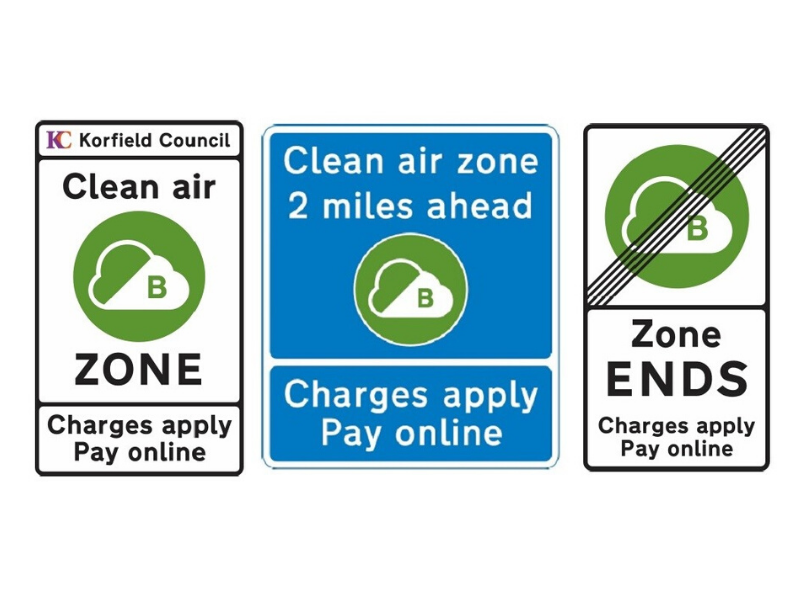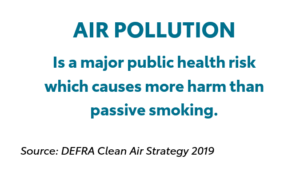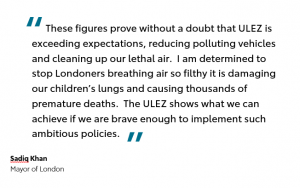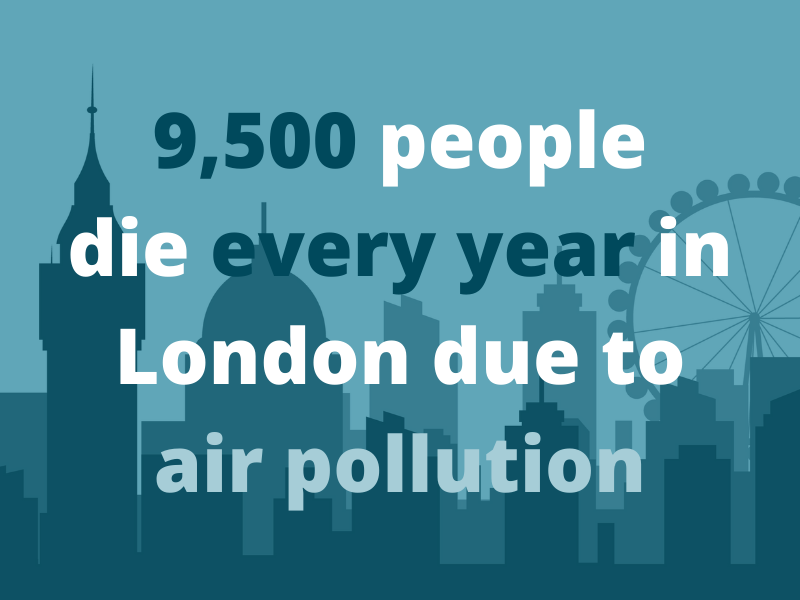- Plans to introduce a Clean Air Zone in July 2020, which will cover the most polluted area of the city, enclosed within the A4540 ring road.
- Cars, taxis, private hire vehicles and LCVs that do not meet the Euro 4 (petrol) and Euro 6 (diesel) emissions standards (broadly, pre-2015 diesel and pre-2006 petrol cars and LCVs) will be charged £8 per day.
- Buses, coaches and heavy goods vehicles (HGVs) that do not meet Euro VI standards (broadly, pre-January 2015 registrations) will be charged £50 per day.
- Short-term exemptions from charges will apply to private cars and commercial vehicles registered within the zone.
- Permanent exemptions will exist for vans and minibuses registered to provide school and community transport and for vehicles in the disabled tax class.
- The fine for not paying the charge will be £120.
27th February 2020
Clean Air Zones 2020 Update

Air pollution
Poor air quality is one of the biggest threats to public health that exists today. In fact, a 2016 report by the Royal College of Physicians revealed that outdoor air pollution causes around 40,000 deaths in the UK annually.
Transport is the biggest source of air pollution in the UK, according to Environmental Protection UK and many towns and cities are failing to meet national air quality objectives.

Clean air strategy
To combat the threat of air pollution, the government launched its Clean Air Strategy in January 2019 to reinforce its commitment to cutting pollution from all forms of transport for both freight and passengers.
London leading the way
As part of the Clean Air Strategy, the world’s first Ultra Low Emission Zone (ULEZ) was launched in central London last April, in an attempt to resolve the capital city’s current toxic air crisis and improve air quality.
 Results
Results
Already, after the first six months, a 35% combined reduction in NOx and CO2 emissions from road transport in the charge zone during the day showed the significant success of these control measures. In addition to these reduced numbers, Transport for London (TfL) has also been able to reinvest >£55m from the surcharge fees back into its network.

ULEZ expansion – October 2021
From 25th October 2021 the ULEZ boundary will be extended to create a single larger zone bounded by the North and South Circular Roads.
Vehicles using the North and South Circular Roads and not going into the ULEZ will not be charged.
ULEZ Boundary Map from 25.10.2021.
Other Cities
As part of the goal to reduce the number of areas in the UK where air pollution breaches legal limits, a further 5 UK cities were also mandated by the Government to introduce a Clean Air Zone in order to reduce levels of nitrogen dioxide.
The list below details the measures currently planned by these 5 local authorities as they work towards ensuring their cities comply with the Government’s air pollution targets.
- Leeds City Council has confirmed its Clean Air Zone will go live on 28 September this year.
- The Clean Air Zone will cover almost the entire area within the A6120, M1, A63, A61, A6110, A647 ring road.
- Cars and LCVs will not be charged.
- Taxis and private hire vehicles that do not meet the Euro 4 (petrol) and Euro 6 (diesel) emissions standards (broadly, pre-2015 diesel and pre-2006 petrol cars and LCVs) will be charged £12.50 per day or £50 a week.
- Buses, coaches and HGVs that do not meet Euro VI emissions standards (broadly, pre-1 January 2015 registrations) will be charged £50 per day.
- Eligible businesses can apply for financial support to contribute to the costs of upgrading or retrofitting vehicles that don’t meet emissions standards.
- Decided not to implement a Clean Air Zone.
- Plans to use traffic management measures to reduce nitrogen dioxide levels inside the city to within the legal limit.
- Decided not to implement a Clean Air Zone.
- Plans to use other measures to reduce nitrogen dioxide levels inside the city to within the legal limit. These measures include retrofitting 80 buses with clean exhaust technology, requiring all taxis and private hire vehicles to be low emission, and replacing the council’s own heavy vehicles – such as refuse collection lorries – with electric or other low-emission vehicles.
- Considering plans to revise Nottingham’s ‘Clear Zone’ – which restricts access to the city centre – to include emissions criteria and a taxi permit scheme.
- Decided not to implement Clean Air Zone charges.
- Planning to introduce a ‘non-charging’ Clean Air Zone in 2020.
- Revising taxi-licensing conditions to remove the most polluting vehicles, and expanding the existing Low Emission Taxi Incentive Scheme.
- Introducing a traffic regulation condition to ensure all buses meet the highest emission standard.
- Opportunities for businesses to assess and trial freight consolidation, reducing HGV trips into the city, and an accreditation scheme for HGV operators for businesses to identify the least polluting operators.
- Preferential charging of the port HGV booking scheme.
- £3.9 million to be invested in cycling infrastructure.
Oxford
Although Oxford is not among the areas ordered by the Government to implement a Clean Air Zone as part of the UK’s Clean Air Strategy, the city has nonetheless announced that it is drawing up a bold plan of its own for the UK’s first Zero Emission Zone. Read our article for more details about the proposed plans.
Other Local Authorities
The Government has also identified other local authorities where it expects pollution levels to reach illegal levels by 2021. These cities have all had to carry out a feasibility study to determine whether or not a Clean Air Zone is required and submit their proposals to the Government for approval.
Useful Resources:
- Clean Air Strategy 2019
- BVRLA interactive UK CAZ map
- Transport for London ULEZ Vehicle Checker
- DVLA Vehicle Checker (for Birmingham and Leeds CAZs)
- Clean Air Zone Framework
- London ULEZ 6 Month Evaluation Report
 Results
Results